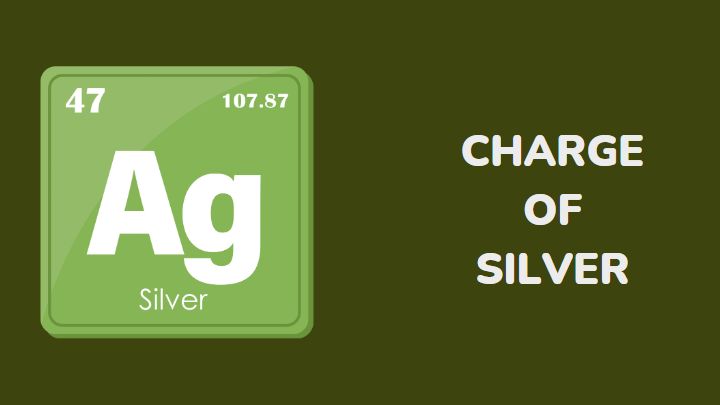Silver, like other transition metals, can have more than one charge. Most commonly, you will find silver ions as Ag+. But, in some cases, silver can exhibit other charges.
Despite the charge of silver, it is the least chemically reactive of the transition metals. But it is stable in water and acids. All these properties are regardless of the charge.
In this article, I’ll discuss the charge of silver and why it exhibits more than one charge.
About silver
- Silver is a transition metal from the D-block
- It has an atomic number of 47 and a mass number of approximately 107.87
- It has an electronic configuration of [Kr]5s14d10
- Silver is a soft, white, lustrous, and reflective metal found in the Earth’s crust
- Silver has a high electrical and thermal conductivity
- It naturally exists as an alloy with gold, argentite, chlorargyrite, and several other metals
- Apart from the natural deposits, silver is also produced through the refining of gold, copper, lead, and zinc
- Silver has a melting point of 1,861.4°F (960.8°C) and boiling point of 4,014°F (2,212°C)
- In addition, silver is malleable, ductile, and resistant to atmospheric oxidation
What is the charge of silver?
Silver can exhibit various charges such as +1, +2, and +3.
The +1 charge is the more common charge. The +2 and +3 charges are less common, but +2 is more common than the +3.
What is the charge of silver ions?
The charge of silver ion is +1 (Ag+). However, silver can exist as silver (II), Ag2+ ion.
What is the charge of silver ions in AgNO3?
The charge of Ag ion in AgNO3 is +1. The negative charge in nitrate requires only one positive charge from Ag to neutralize it.
What is the charge of silver ions in Ag2S?
Each of the Ag ions in Ag2S has a charge of -1. These two Ag ions are necessary to quench the 2- charge on sulfide.
What is the charge of silver ion in Ag(NH3)2?
Although a complex ion, the charge on Ag is +1.
What is the charge of the silver ion in AgSO4?
The charge of silver in AgSO4 is +2. The charge on the sulfate ion is -2. This means that it requires two silver ions to
Is silver a cation or an anion?
Silver ion (Ag+) is a cation. It can form both +1 and +2 cations.
FAQs
What is the electric charge of Ag?
The electrical charge of Ag is +1. The electrical charge of any element is the same as its ionic charge.
What is the nuclear charge of Ag?
The nuclear charge of Ag is 47. The nuclear charge of any element is the same as the atomic number of that element.
What is the charge of Ag in AgCl?
Silver chloride (AgCl) is an ionic compound, and when it dissociates in a solvent, it separates into silver and chlorine ions. In AgCl, Ag has a +1 charge.
Conclusion
Silver ion is commonly written as Ag+, implying a +1 charge. However, in some reactions, silver loses two electrons and forms Ag2+.
Most transition metals naturally exhibit more than one charge. But, the likes of Ag have only one popular charge. Other charges exist, but the +1 charge is more common.
Read this article on the charge of the sodium ion.
Thanks for reading.
